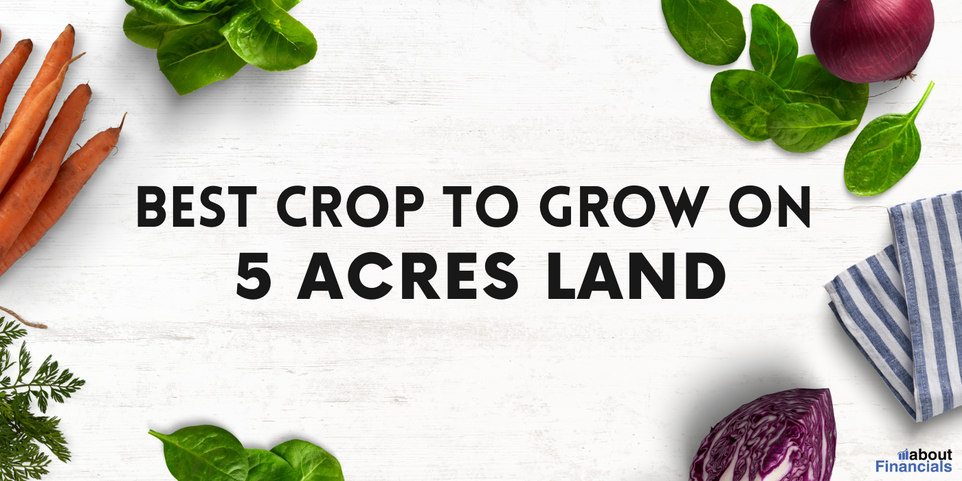When it comes to running a successful farm on 5 acres of land, choosing the right crop can make all the difference.
In this article, we’ll delve into the essential considerations that will help you determine the best crop to grow on your 5 acre plot.
Different crops have different requirements, and the success of your farm depends on how well these requirements align with the conditions of your land.
Best crop to grow on 5 acres
1. Specialty vegetables and herbs
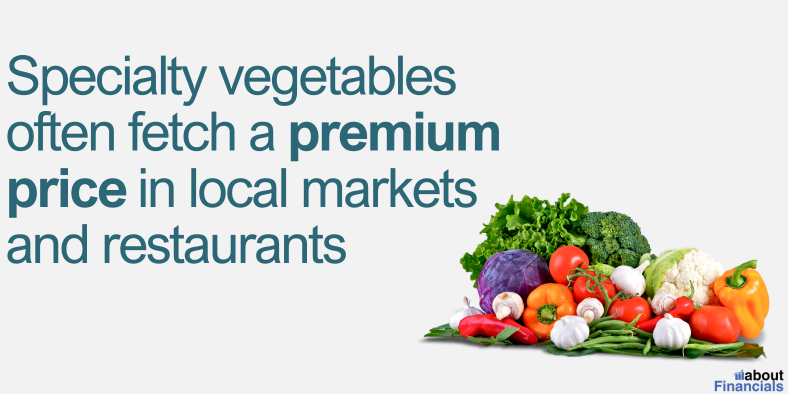
Growing high-value specialty vegetables and herbs can be a profitable venture for a small farm.
Consider cultivating crops like gourmet salad greens, microgreens, heirloom tomatoes, and exotic herbs. These crops often fetch a premium price in local markets and restaurants, catering to the increasing demand for fresh, unique produce.
2. Berries and small fruits

You can consider following crops that can provide consistent yields over multiple years.
Berries, such as strawberries, blueberries, raspberries, and blackberries, are popular among consumers for their health benefits and versatility in various culinary uses.
3. Corn and Legumes
Utilizing crop rotation techniques can help maintain soil fertility and prevent pest and disease buildup.
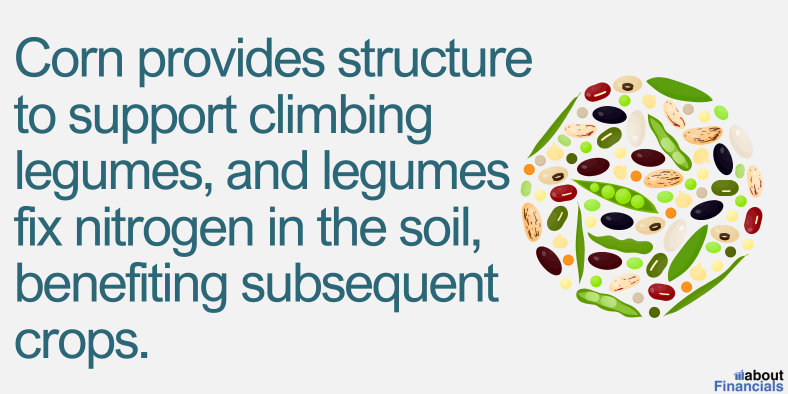
Planting corn and legumes like beans or peas in rotation can be beneficial. Corn provides structure to support climbing legumes, and legumes fix nitrogen in the soil, benefiting subsequent crops.
4. Root vegetables and Brassicas
Root vegetables like carrots, beets, and radishes, along with brassicas like broccoli, cabbage, and kale, form another excellent crop rotation combination. These crops have different nutrient needs, helping to prevent soil depletion and maintain a healthy growing environment.
5. Medicinal Herbs
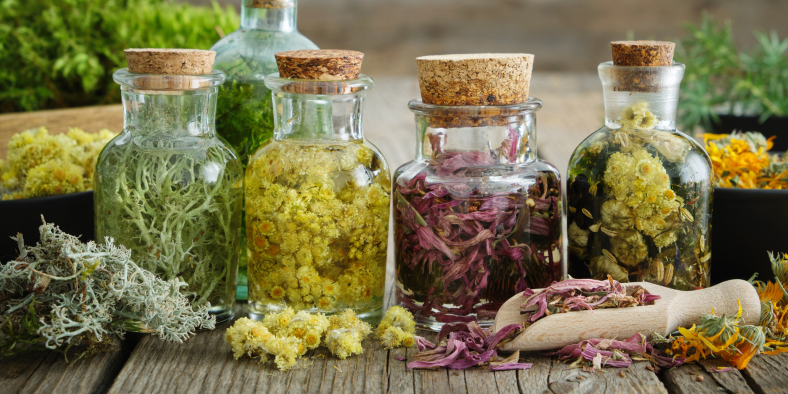
The demand for medicinal herbs is on the rise due to increasing interest in alternative medicine and natural remedies. Consider cultivating herbs like lavender, chamomile, Echinacea, and peppermint. Medicinal herbs can be sold fresh, dried, or processed into value-added products like teas and essential oils.
6. Organic produce
If there’s a demand for organic produce in your area, consider transitioning to organic farming. Organic fruits and vegetables often command higher prices due to the rigorous cultivation practices and the absence of synthetic pesticides and fertilizers.
7. Fruit trees
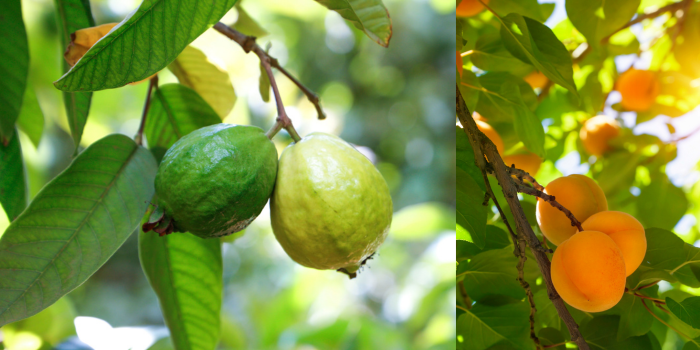
Planting fruit trees like apple, pear, peach, or citrus can be a long-term investment for your 5-acre farm. While it may take a few years for the trees to reach full production, once established, they can provide a steady supply of fruits for years to come.
8. Nut Trees
Depending on the climate of your region, consider planting nut-bearing trees like walnut, pecan, or almond. Nut crops can be a valuable addition to your farm and have a growing market demand for their health benefits.
Estimated prices
| Crop | Selling Price per Pound | Seed Cost for 5 Acres |
| Organic Herbs | ||
| – Basil | $8 to $12 | $100 to $300 |
| Gourmet Salad Greens | ||
| – Arugula | $8 to $15 | $150 to $250 |
| – Baby Spinach | $6 to $10 | $150 to $250 |
| Berries | ||
| – Strawberries | $3 to $6 | $1,500 to $3,000 |
| – Blueberries | $4 to $7 | $1,500 to $3,000 |
| – Raspberries | $5 to $8 | $1,500 to $3,000 |
| Exotic Vegetables | ||
| – Baby Bok Choy | $2 to $4 | $200 to $300 |
| – Baby Kale | $4 to $6 | $200 to $300 |
| – Snow Peas | $3 to $5 | $200 to $300 |
| Specialty Fruits | ||
| – Elderberries | $10 to $20 | $2,000 to $4,000 |
| – Goji Berries | $20 to $40 | $2,000 to $4,000 |
| Microgreens | ||
| – Microgreens Mix | $20 to $30 | $100 to $200 |
| – Radish Microgreens | $15 to $25 | $100 to $200 |
Climate and Weather Considerations
The first and foremost aspect to consider is the local climate and weather patterns. Understanding your region’s typical temperature ranges, rainfall amounts, and sunlight exposure will help you narrow down suitable crop options. Some crops are more tolerant of cold temperatures, while others thrive in warm, tropical climates. It’s essential to choose crops that are well-suited to the climate of your area to ensure optimal growth and yield.
Soil Analysis and Preparation
Another crucial factor in crop selection is the condition of your soil. Conducting a thorough soil analysis is vital to assess its fertility, pH levels, and nutrient content. A soil test will help you identify any deficiencies or imbalances that may hinder crop growth. Based on the results, you can take appropriate steps to prepare the soil, such as adding organic matter, adjusting pH levels, or applying specific fertilizers.
Market Demand and Profitability
Growing a successful crop not only involves producing healthy plants but also having a viable market for your harvest. Before finalizing your crop choice, research the current market demand for various crops in your area. Consider which crops are in high demand and have the potential for profitability. Additionally, be mindful of any competition that might affect the market price of your chosen crop.
Personal Preferences and Experience
Beyond the technical aspects, it’s essential to take your personal preferences and experience into account. Your passion for a particular crop or your previous experience in cultivating certain plants can significantly impact your success as a farmer. If you have expertise in growing specific crops, it may be advantageous to continue building on that knowledge.
Sustainable Farming Practices
Organic farming has gained popularity among consumers who prioritize environmentally friendly and chemical-free produce. By adopting organic practices, you can cater to this growing demand while also contributing to the preservation of soil health and biodiversity.
Soil management
Organic farming relies on building and maintaining healthy soil. Use organic matter such as compost, cover crops, and green manure to enhance soil structure and nutrient content. Avoid synthetic fertilizers and instead focus on natural sources of nutrients.
Pest and weed control
Embrace integrated pest management (IPM) techniques to control pests and weeds without resorting to chemical pesticides. Encourage beneficial insects, practice crop rotation, and use physical barriers to protect crops naturally.
Efficient Irrigation
Proper water management is crucial for a sustainable farm. Implement efficient irrigation systems like drip irrigation or soaker hoses to deliver water directly to plant roots, reducing water wastage and minimizing the risk of disease.
Rainwater harvesting
Consider collecting rainwater to supplement irrigation needs during dry periods. Rainwater harvesting not only conserves water but also reduces your dependence on other water sources.
Habitat preservation
Designate areas of your farm for wildlife and native plant habitat. Encouraging biodiversity can help control pests naturally and create a more resilient ecosystem.
Bee-friendly practices
Pollinators, especially bees, play a vital role in crop pollination. Promote bee-friendly practices by planting flowering plants and avoiding the use of harmful pesticides that could harm these beneficial insects.
Energy efficiency
Adopt energy-efficient practices, such as using solar power for irrigation pumps or investing in energy-saving equipment, to reduce the farm’s carbon footprint.
Waste management
Implement proper waste management practices on your farm. Compost crop residues and kitchen scraps to create nutrient-rich compost for your fields.
Final thoughts
Agriculture is a dynamic field. The journey of choosing the best crop to grow on 5 acres farm is a combination of science, art, and dedication. There is no doubt that farming is a rewarding project. With careful planning and sustainable practices, your 5-acre plot has the potential to flourish and contribute to the well-being of both your community and the environment.

